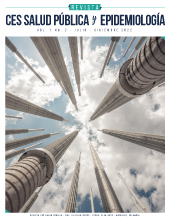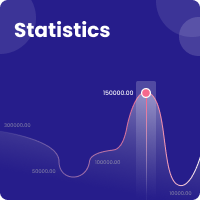Reflections about physiotherapists professional performance within the Cardiovascular Pulmonary field in Colombia
DOI:
https://doi.org/10.21615/cesspe.6906Keywords:
cardiovascular system, cardiac rehabilitation, respiratory care, professional performanceAbstract
Introduction: at the beginning of professional Physiotherapy training in the Pulmonary Cardiovascular field, in Colombia, and its evolution who was parallel to the scientific and technological advances so that, at the end of the 20th century revealed a greater knowledge from the evaluation, treatment and improving life expectancy in patients with cardiovascular and chronic respiratory disease. Colombian universities that lead the undergrade programs in physiotherapy work jointly with the Colombian Association of Physiotherapy (ASCOFI) gave the support in continuing education, with specific seminars and certificates in the area, with national and international speakers, in the context of informal, which lead to a great subject reform at the credit level, content and objectives within the curriculum, in addition, clinical rotations, the aim was to form a profile optimizing insertion labor and social development with specialized skills and competencies at the pulmonary cardiovascular level that favor the integration, positioning and impact the physiotherapist role in the Intensive Care Units (ICU) , emergencies, hospitalization and external consultation. The effectiveness of this alliance was the pillar for the creation of specializations in Critical Care, Cardiac Rehabilitation, Pulmonary Rehabilitation and Cardiorespiratory Physiotherapy in our country. Development: the article is based on the reflection of the training and professional performance of the Colombian Physiotherapist within the Pulmonary Cardiovascular Domain (PCD). Their advances, scope and demands to defend their professional practice in this area, and likewise the development and dynamics of the physiotherapist in our country, which reflected in the autonomy, the introduction of a large number of actions and behaviors of specialized care and comprehensive approach between the PCD, neuro-musculoskeletal and integumentary domains which have turned the physical therapist an essential resource in all hospital and health care centers, favoring the optimization of resources, the timely and effective response to the growing demand for respiratory and cardiovascular disease. Conclusion: although the balance in the PCD in Colombia is positive, the demand continues in an exponential grow, it is important to consider the distribution of specialist physiotherapists or those with optimal skills in the area in different regions of the country, who can respond to the community health care needs and their epidemiological profile, propose alliances, actions and discussions with scientific, governmental and educational associations that allow regulating the quality of postgraduate training programs and continuing education that arise permanently.
Downloads
References
Ministerio de Salud Pública y Educación Nacional. Decreto 1056 de Marzo 31 de 1954 [Internet]1954. Diario Oficial 28.453 09. Disponible en: https://www.mineducacion.gov.co/portal/ejes-tematicos/Normas-sobre-Educacion-Superior/103346:Decreto-1056-de-Marzo-31-de-1954
Ministerio de Salud Pública y Educación Nacional. Ley 9 13 de Febrero de 1976. [Internet] 1976. Diario Oficial 34489. Disponible en: https://www.funcionpublica.gov.co/eva/gestornormativo/norma.php?i=66154#:~:text=ART%C3%8DCULO%201%C2%BA.,la%20capacidad%20funcional%20del%20individuo
Colombia, Ministerio de Educación Nacional. “Decreto 080 de 1980”, por el cual se organiza el sistema de educación postsecundaria. Bogotá, 1980. Disponible en: https://www.mineducacion.gov.co/1780/articles-102556_archivo_pdf.pdf
Sarmiento M; Cruz I; Molina V; Martínez A. “Fisioterapia en Colombia: Historia y Perspectiva”. Revista Asociación Colombiana de Fisioterapia. 1994; 39: 7-11[Internet] 2015. Disponible en: https://es.calameo.com/read/00420368522826156b0f2
Sarmiento M. “El fisioterapeuta colombiano: Una especie en extinción”. Revista Asociación Colombiana de Fisioterapia. 1998; 43: 60-2.
Troosters T, Blondeel A, Janssens W, Demeyer Heleen D. The past, present and future of pulmonary rehabilitation. Respirology. 2019; 24, 830–837. DOI: 10.1111/resp.13517.
Ministerio de Educación Nacional. Ley 30 de 1992 [Internet] Disponible en: http://www.oas.org/juridico/spanish/mesicic2_col_ley_30_sp.pdf
Ministerio de Educación. Ley 528 de 1999. Por la cual se reglamenta el ejercicio de la fisioterapia, se dictan normas en materia de ética y otras disposiciones. [Internet]1999. Disponible en: http://www.mineducacion.gov.co/1621/articles105013_archivo_pdf.pdf
Congreso de Colombia. Ley 1164 de 2007 por la cual se dictan disposiciones en materia del Talento Humano en Salud. [Internet] 2007. Diario Oficial 46771. Disponible en: https://www.minsalud.gov.co/Normatividad/LEY%201164%20DE%202007.pdf
Duran D., Santa J. Educación posgradual para fisioterapeutas en el área Cardiopulmonar en Colombia. Rev. Cienc. Salud. 2007; 5(2):47-59. Disponible en: https://revistas.urosario.edu.co/index.php/revsalud/article/view/518
Agredo V., Franco J., Mina E., Perfil profesional y ocupacional de los fisioterapeutas en Colombia. CES Movimiento y salud. 2015;3(1):35-43 disponible en: https://revistas.ces.edu.co/index.php/movimientoysalud/article/view/3463/2420
Ministerio de Salud y Protección social. Perfil Profesional y Competencias del Fisioterapeuta En Colombia. Bogotá D. [Internet] 2015. Disponible en: https://www.minsalud.gov.co/sites/rid/Lists/BibliotecaDigital/RIDE/VS/TH/Perfil-profesional-competencias-Fisioterapeuta-Colombia.pdf.
Ministerio de Salud y Protección Social. Intervenciones para un programa de Rehabilitación Pulmonar. Convenio 519 del 2015. Bogotá D. [Internet]. Disponible en:
Saner H., 70 years of cardiac rehabilitation in Switzerland and Europe – from history to new horizons. Cardiovasc Med. 2019. 1-4. DOI: 10.4414/cvm.2019.02034
Supervia M, Turk-Adawi K, Lopez-Jimenez F, Pesah E, Ding R, Britto RR, Bjarnason-Wehrens B, Derman W, Abreu A, Babu AS, Santos CA, Jong SK, Cuenza L, Yeo TJ, Scantlebury D, Andersen K, Gonzalez G, Giga V, Vulic D, Vataman E, Cliff J, Kouidi E, Yagci I, Kim C, Benaim B, Estany ER, Fernandez R, Radi B, Gaita D, Simon A, Chen SY, Roxburgh B, Martin JC, Maskhulia L, Burdiat G, Salmon R, Lomelí H, Sadeghi M, Sovova E, Hautala A, Tamuleviciute-Prasciene E, Ambrosetti M, Neubeck L, Asher E, Kemps H, Eysymontt Z, Farsky S, Hayward J, Prescott E, Dawkes S, Santibanez C, Zeballos C, Pavy B, Kiessling A, Sarrafzadegan N, Baer C, Thomas R, Hu D, Grace SL. Nature of Cardiac Rehabilitation Around the Globe. EClinicalMedicine. 2019 Jul 4;13:46-56. DOI: 10.1016/j.eclinm.2019.06.006. PMID: 31517262; PMCID: PMC6733999.
World Confederation For Physical Therapy- (WCPT). International Network of Physiotherapy Regulatory Authorities-. Reporte Del Grupo De Trabajo De La Wcpt/Inptra Sobre Práctica Digital En Fisioterapia. 2020 Disponible en: https://world.physio/sites/default/files/2020-06/Reporte-Practica-Digital-Espanol.pdf
Cibele C., Fagundes R., Celso F. Rehabilitación Pulmonar en Brasil. Fisioter. Pesqui. 2017; V (24) 4: 34-41. Disponible en: https://doi.org/10.1590/1809-2950/00000024042017
Zullo A., Fleckenstein J., Shleip R. et al. Structural and Functional Changes in the Coupling of Fascial Tissue, Skeletal Muscle, and Nerves During Aging. Physiol., 2020; 11:86-92. Disponible en: https://doi.org/10.3389/fphys.2020.00592
Bordoni, B. The Five Diaphragms in Osteopathic Manipulative Medicine: Neurological Relationship. Cureus, Part 1. 2020; 12(4): DOI: 10.7759 / cureus.8697. Disponible en: https://www.cureus.com/articles/34644-the-five-diaphragms-in-osteopathic-manipulative-medicine-neurological-relationships-part-1
Instituto Nacional de Salud. Información para la vigilancia de la infección por SARS- COV-2. Bogotá D. 6 Octubre 2022 [Internet]. Disponible en: https://www.ins.gov.co/Noticias/paginas/coronavirus.aspx
Shigeaki I., Hatakeyama J., et al. Post-intensive care syndrome: its pathophysiology, prevention, and future directions. Acute Med Surg . 2019 Apr 25;6(3):233-246. doi: 10.1002/ams2.415. [Internet]. Disponible en: https://pubmed.ncbi.nlm.nih.gov/31304024/
Wilches E. Reflexiones sobre el Síndrome de CuidadosPost- Intensivos en los pacientes que sobreviven al COVID-19 y el papel de los fisioterapeutas. Salutem Scientia Spiritus | Volumen 6 | Suplemento 1 | Enero-Junio | 2020 | ISSN: 2463-1426. [Internet]. Disponible en: https://www.researchgate.net/publication/344101442
Downloads
Published
How to Cite
Issue
Section
License
Copyright (c) 2023 Revista CES Salud Pública y Epidemiología

This work is licensed under a Creative Commons Attribution-NonCommercial-ShareAlike 4.0 International License.
Derechos de reproducción (copyright)
Cada manuscrito se acompañará de una declaración en la que se especifique que los materiales son inéditos, que no han sido publicados anteriormente en formato impreso o electrónico y que no se presentarán a ningún otro medio antes de conocer la decisión de la revista. En todo caso, cualquier publicación anterior, sea en forma impresa o electrónica, deberá darse a conocer a la redacción por escrito.
Plagios, duplicaciones totales o parciales, traduccones del original a otro idioma son de responsabilidad exclusiva de los autores el envío.
Los autores adjuntarán una declaración firmada indicando que, si el manuscrito se acepta para su publicación, los derechos de reproducción son propiedad exclusiva de la Revista CES Salud Pública y Epidemiología.
Se solicita a los autores que proporcionen la información completa acerca de cualquier beca o subvención recibida de una entidad comercial u otro grupo con intereses privados, u otro organismo, para costear parcial o totalmente el trabajo en que se basa el artículo.
Los autores tienen la responsabilidad de obtener los permisos necesarios para reproducir cualquier material protegido por derechos de reproducción. El manuscrito se acompañará de la carta original que otorgue ese permiso y en ella debe especificarse con exactitud el número del cuadro o figura o el texto exacto que se citará y cómo se usará, así como la referencia bibliográfica completa.



